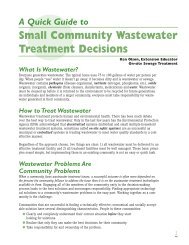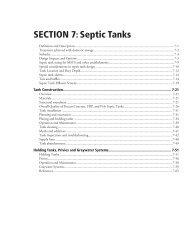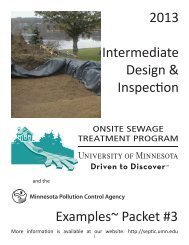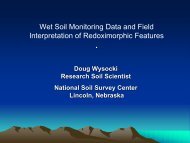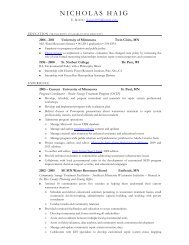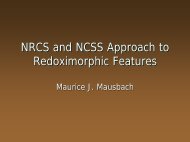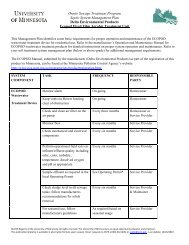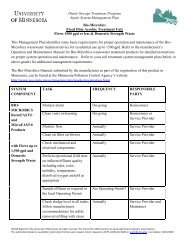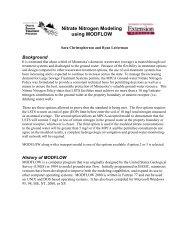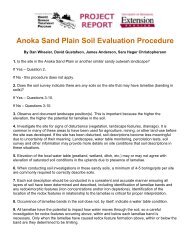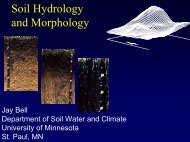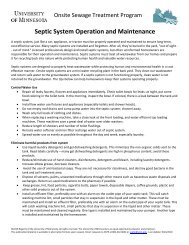Community Assessment Report - Onsite Sewage Treatment ...
Community Assessment Report - Onsite Sewage Treatment ...
Community Assessment Report - Onsite Sewage Treatment ...
Create successful ePaper yourself
Turn your PDF publications into a flip-book with our unique Google optimized e-Paper software.
Safety (ITPHS); assessing likelihood of SSTS protection of groundwater 4 ; and evaluating futureonsite ISTS options. The determination of feasibility of ISTS and/or cluster system installationrequired an evaluation of the soils. In addition to the soil survey data available (Figure 2), Wenckcompleted soil borings on properties to identify and evaluate soils throughout the CAR area(Appendix B and D).Prior to commencement of field work, Chisago County provided available pastpermitting/design/inspection records for the SSTS as well as the GIS shape file of the parcels andlocations of structures and infrastructure. Homeowner surveys were collected by the communityto gain further knowledge of the parcel occupancy status, water supply, and wastewatertreatment infrastructure. The surveys were used to evaluate seasonal and parcel specific waterusage and wastewater generation and to provide a baseline for parcel investigation andevaluation. Information gleaned from these surveys was incorporated into Appendix B. Wenckalso relied upon the Chisago County Environmental Services staff to answer questions related topast permitting efforts.Wenck began the CAR by visiting the community on May 7, 2012. Field work included sitevisits where maps were created for each individual parcel, wells were located (if possible), andtanks were located and evaluated. This initial phase was followed immediately by a secondphase of evaluation of soils and potential suitability of an area onsite at each property for a futureISTS. The soil type and existing depth to seasonally high groundwater was determined usingsoil borings in order to assess what type of ISTS would most likely be installed. The site visitsalso included a compliance assessment of the cluster SSTS and individual septic tanks to obtainthe information found in Section 2.3. At the SSTS soil treatment area, the vertical separationbetween the seasonally high groundwater and the bottom of the effluent dispersal area wasdetermined.4 Failure to protect groundwater is defined in 2011 MN Rules Chapter 7080.1500 Subp. 4B. “…a system that isfailing to protect groundwater is a system that is a seepage pit, cesspool, drywell, leaching pit, or other pit; a systemwith less than the required vertical separation distance described in items D and E; and a system not abandoned inaccordance with part 7080.2500.”T:\2797-01 Chisago County\CAR\ROLLINGS SHORES CAR 090712.docx2-2



